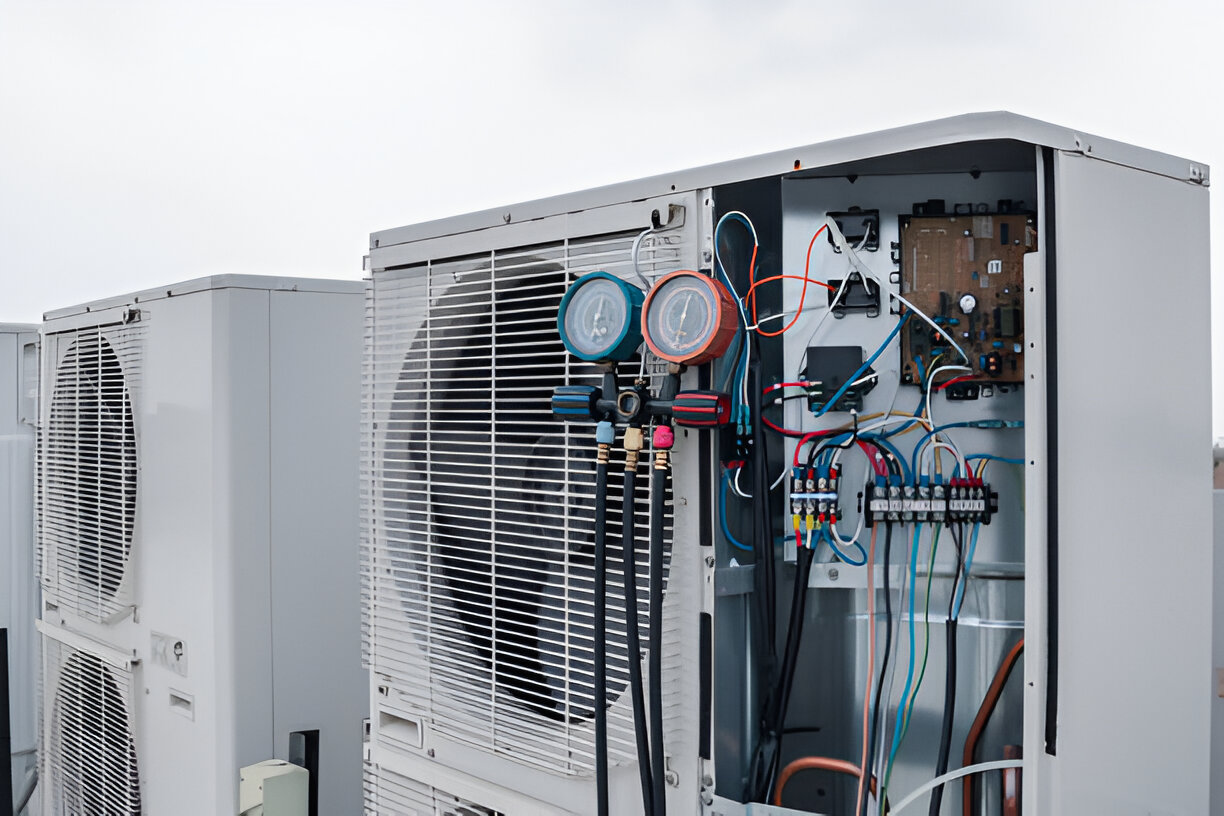24 Hour Heat Pump Repair in Santan Valley, AZ
When your heat pump quits in the middle of a triple-digit summer day or during an unexpectedly cool desert night, the result is immediate discomfort and potential risk to home occupants and sensitive equipment. Our 24 hour heat pump repair in Santan Valley, AZ focuses on fast, professional emergency response that stabilizes conditions quickly, pinpoints root causes, and provides clear options for repair or safe temporary operation. This page explains common urgent scenarios, how after-hours dispatch works, typical response times, on-site diagnostics and stabilization, emergency pricing transparency, and the safety standards technicians follow in Santan Valley homes.

Common 24 hour heat pump repair issues in Santan Valley
- Complete system failure (outdoor unit not running, indoor fan dead)
- No heating or cooling during extreme heat or cold
- Refrigerant leaks leading to loss of cooling capacity
- Frozen lines or coil icing during cool nights or winter storms
- Electrical failures: tripped breakers, blown fuses, failed capacitors or contactors
- Loud or unusual noises (grinding, banging, hissing)
- Burning smells or visible smoke indicating electrical hazards
- Rapid cycling or short-cycling that prevents comfortable temperature control
- Thermostat communication failures or control board faults
Santan Valley’s environment—high summer heat, seasonal dust and monsoon debris, and occasional cold snaps—puts extra strain on heat pumps. Dust-clogged coils, blocked outdoor airflow, and heavy run-times are frequent contributors to emergency breakdowns in the area.
After-hours contact and dispatch procedures
- Triage: After-hours contacts are handled by an on-call dispatcher who asks key triage questions (symptoms, system make/model if known, safety concerns like smoke or gas odor) to prioritize the call.
- Dispatch: Based on location and severity, a qualified technician is assigned and dispatched with an initial ETA. Technicians carry essential diagnostics tools and common emergency parts.
- Confirmation: The dispatcher confirms the address, onsite access instructions, and any immediate safety steps to take until arrival (for example, shutting off power to the outdoor unit if there is smoke).
- Arrival: Technicians arrive in marked vehicles with identification, ready to perform a safety assessment, diagnostics, and temporary stabilization.
Typical response times in Santan Valley
- Urban and nearby areas: 60 to 90 minutes from dispatch during after-hours.
- Outlying or heavily congested locations in the valley: up to 2 hours depending on traffic, time of night, and technician availability.Response times vary by time of day, weather conditions (monsoon storms or extreme heat can slow travel), and call volume. Dispatch prioritizes life-safety issues first (smoke, electrical hazards, severe temperature extremes).
On-site diagnostic process and temporary stabilization measures
- Safety first: Technician verifies no immediate hazards (smoke, burning odors, refrigerant smell) and follows lockout/tagout for electrical safety.
- Quick triage inspection: Visual check of outdoor unit, indoor air handler, thermostat, breakers, drain lines, and air filters to identify obvious issues.
- Diagnostic testing: Multimeter checks for voltage and continuity, capacitor and contactor evaluation, refrigerant pressure readings, compressor amp draw, and control board diagnostics.
- Temporary stabilization options commonly performed:
- Resetting breakers and inspecting electrical connections
- Switching system to auxiliary or emergency heat if available
- Replacing a failed contactor or capacitor with a stocked emergency part to restore function
- Clearing debris and improving airflow around outdoor unit (removing nest material, dust blockage)
- Isolating and containing refrigerant leaks and putting the system into a safe shutdown if required
- Temporarily securing panels and exposed components to protect from monsoon moistureThese measures are meant to restore safe operation or stabilize the home’s environment until a permanent repair can be completed.
Transparent emergency pricing you can expect
- Dispatch/after-hours fee: Emergency visits include a clearly stated after-hours dispatch fee to cover on-call staffing and rapid response.
- Labor and parts: Technicians will explain labor rates and estimated parts costs before performing non-emergency repairs. For immediate life-safety repairs, technicians will stabilize first and provide a written estimate for follow-up work.
- Itemized invoice: Every emergency service includes an itemized invoice showing dispatch fees, labor hours, parts used, and any warranties or guarantees on work performed.This approach ensures you understand emergency pricing up front and have documentation for insurance or warranty purposes.
Safety protocols and technician credentials
- Licensed, bonded, and insured technicians trained for high-voltage heat pump systems
- EPA certification for proper refrigerant handling and leak procedures
- PPE including insulated gloves and eye protection; use of lockout/tagout and voltage testing before contact
- Electrical isolation and safe shutdown procedures if smoke or burning odors are present
- Clear communication of hazards and written recommendations for repair vs temporary measures
Why timely emergency repair matters in Santan Valley
Prompt emergency heat pump repair reduces risk of further equipment damage, prevents prolonged discomfort during extreme temperatures, and can avoid higher costs that result from ignored electrical faults or refrigerant loss. Early stabilization preserves indoor air quality and protects vulnerable occupants and electronics from heat or cold stress.
Preventive tips to reduce emergency calls
- Schedule seasonal tune-ups before peak summer and winter use
- Replace or clean air filters monthly during heavy use seasons
- Keep at least 2 feet of clearance around the outdoor unit; remove debris after dust storms and monsoon events
- Monitor for unusual noises, cycling patterns, or odors and address small issues early
- Ensure condensate lines are clear to prevent water overflow and indoor damage
- Verify thermostat batteries and settings; smart thermostats can alert you earlier to issues
Keeping these practices in mind for homes in Santan Valley helps reduce the chance of sudden breakdowns and extends the useful life of your heat pump. When emergencies do occur, professional 24 hour heat pump repair in Santan Valley, AZ focuses on safe, transparent, and effective solutions to get your home back to comfort quickly.






